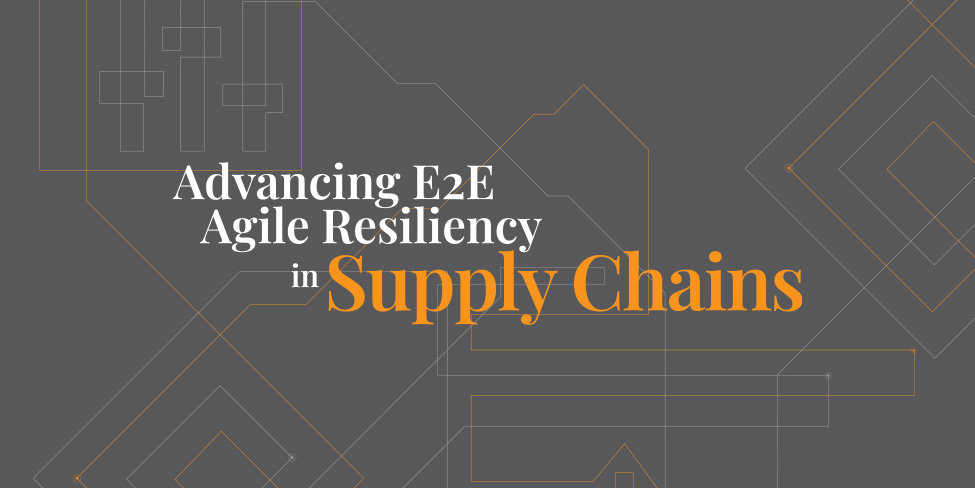For almost 20 years, supply chains’ value to the organization centered on efficiency and cost minimization, creating complexity and—as COVID-19 has demonstrated in the extreme—leaving enterprises vulnerable to disruption. A new study from the Global Supply Chain Institute (GSCI) now quantifies supply chain disruptions’ impact on organizational performance and provides a pathway for assessing and increasing supply chain resiliency.
“Supply chain leaders have warned about vulnerability for years, but the boardroom and shareholders are finally becoming concerned about the traditional quick-fix, crisis-response approach,” says David Demers, GSCI Fellow at the University of Tennessee, Knoxville’s Haslam College of Business, and co-author of “Advancing E2E Agile Resiliency in Supply Chains.” “Disruptions like the trade war and pandemic last longer and come more frequently than previous disruptions, and enterprises with systemic readiness for them gain significant market share.”
Demers and his co-author Brian Kolek used their company Avicon’s proprietary software to analyze performance for the top 16 to 24 organizations in the consumer packaged goods (CPG), medical devices, and industrial machinery industries, for two quarters before and during the pandemic. Their Diamond Analysis connects end-to-end (E2E) supply chain design to key financial metrics, placing a firm’s performance in one of four quadrants in comparison to their peers. The result shows the clear market winners in each industry during the pandemic and the supply chain design levers they used to advantage.
“COVID-19’s impact is significantly uneven within industries,” Demers says. “Even in industrial machinery, a sector that took large hits as a whole during the pandemic, there are stand-out companies who mitigate losses and even make gains. That range between loss and gain appears connected to their supply chain’s level of agile resiliency.”
Demers and Kolek define agile resiliency as supply chain design that adopts the best attributes of E2E agility and resiliency readiness. Their research identifies 10 critical capabilities for agile resiliency, including the use of metrics, a command center, and disruption tools and methods; agile resiliency consideration in network and workflow design; trading partner alignment and cross-enterprise teaming; and readiness and dynamic response.
Interviews with executives at 22 leading supply chain organizations informed these capabilities and identified leadership as a top precondition for creating agile resiliency. The paper provides a model to assess and build leadership capabilities for agile resiliency, identifying six key areas of concern. The paper’s Agile Resiliency Enablement Blueprint guides organizations through the steps of creating their own agile resiliency supply chain design.
The paper also provides a case study of a CPG firm that created significant value and market gains through agile resiliency during COVID-19. The authors warn that every organization’s agile resilient design will be unique, but detail what the case study organization implemented in each of the 10 critical capabilities.
“Advancing E2E Agile Resiliency in Supply Chains” is the Global Supply Chain Institute’s 24th white paper.
About the Global Supply Chain Institute
The Global Supply Chain Institute at the University of Tennessee, Knoxville shapes and influences the practice of supply chain management by serving as the preeminent global hub for leading practitioners, academics and students to learn, network and connect.
About Avicon
Avicon is a supply chain applied learning and team development practice. Avicon’s proprietary SCALE-Up (Supply Chain Applied Learning Excellence) program was designed to address the growing level of complexity in supply chain operating systems.
